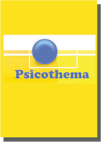Resumen
Efecto del incremento de activación en tareas con cambio predecible y aleatorio: Evidencia que implica la red atencional anterior en el cambio aleatorio, pero no en el predecible. Tornay y Milan encontraron que el costo por cambio tiende a ser más pequeño cuando las tareas cambian de forma aleatoria que cuando lo hace de forma predecible. Estos autores proponen que esta diferencia es debida a la activación de la Red Atencional Anterior (RAA), provocada por las dificultades cognitivas que impone el cambio aleatorio. En este trabajo se sugiere que en las tareas de cambio aleatorio es posible recuperar el costo si la RAA es inhibida por la activación de la red de alerta. Se pone a prueba esta hipótesis evaluando la interacción entre el incremento de la activación (red de alerta) y el costo, tanto en cambio predecible como aleatorio. El resultado obtenido confirma la hipótesis y sugiere que las diferencias en costo por cambio entre tareas predecibles y aleatorias son debidas a la participación de mecanismos de control atencional. Estos datos pueden ayudar a aclarar la controversia existente al respecto.Descargas
Los datos de descargas todavía no están disponibles.
